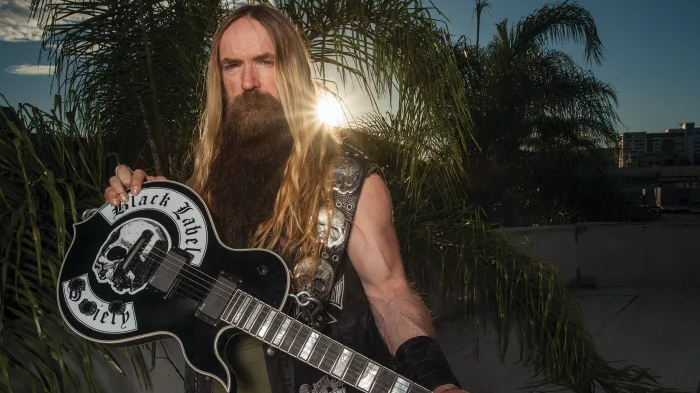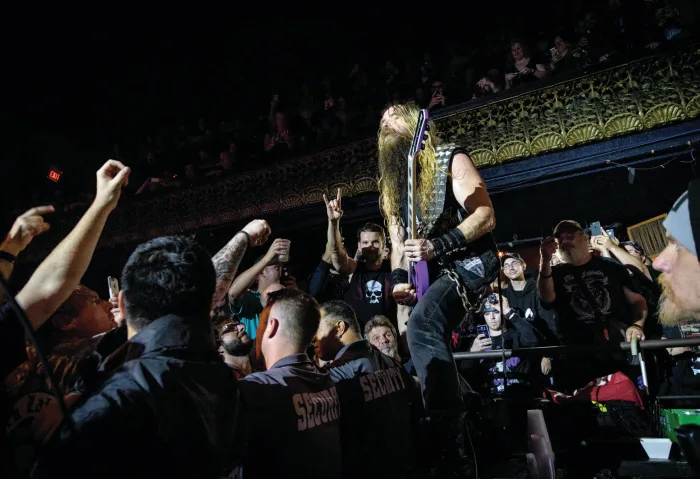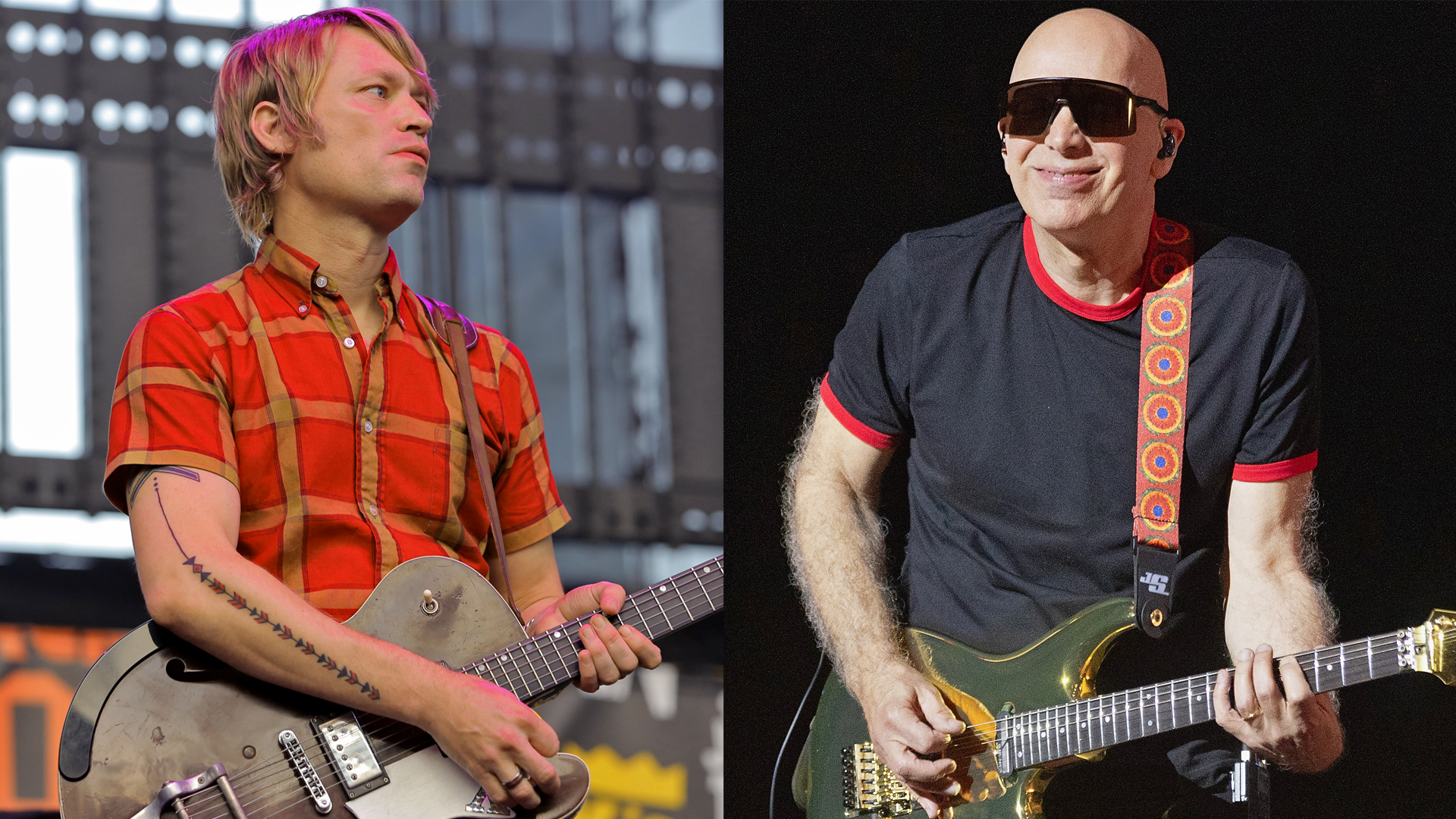Zakk Wylde on Developing Terrifying Technique, Kick-Ass Tones, and Their Own Style
We talk to the modern-day viking about how he acquired his formidable chops.

When it comes to icons of shred, Zakk Wylde is a modern-day Viking with his take-no-prisoners solos and battering-ram rhythm assaults. A certified badass who has immensely influenced the rock/metal scene, Wylde experienced dragster acceleration to the Big Time when he joined Ozzy Osbourne in 1987, and began his odyssey of high-profile shredding on No Rest for the Wicked. A well-rounded musician whose approach has always been a multi-faceted one, Wylde taps into everything from southern rock and R&B, to the groundbreaking sounds of Robin Trower, Frank Marino, Led Zeppelin, Jimi Hendrix (he has performed semi-regularly with the Experience Hendrix Tour since it stated in 2012), and, of course, Black Sabbath. Wylde created Zakk Sabbath to scratch that itch on a regular basis, and his long association with “the Boss” led to his reuniting with Ozzy and the band last summer to cover Sabbath dates that Gus G. couldn’t make.
Fusion icons like Al DiMeola and John McLaughlin have factored into Wyle’s terrifying picking style, and, of course, there’s his whole acoustic-electric side, which is presented on Black Label Society albums such as Hangover Music Vol. VI, Unblackened, and 2016’s Book of Shadows II. In fact, there seems to be no music that Wylde doesn’t have some affinity for, and that talent has certainly factored into the seemingly disparate blend of metal and balladry that BLS has been churning out since its formation in 1998. We caught up with Wylde as he was heading out on tour prior to the release of BLS’s tenth album, Grimmest Hits [eOne].

You have a very precise attack in your right-hand. Can you talk about that?
It’s all about being efficient. You can hold the pick any way you want, and keep your hand in whatever position feels right—depending on how long your arms are and all that—but learning how to play everything as cleanly as possible is the key to building your chops. Using a metronome is really helpful to learning how to play fast and clean. You start it at a slower setting until you can play whatever it is you’re practicing perfectly, and then speed it up a little and get that sounding perfect, and so on. Playing with a cleaner tone helps you become more precise, too, but the important thing is to repeat it over and over until you’ve got it to the point where it’s just automatic.
You’ve said that John McLaughlin was a big influence on you. Specifically, how did his style shape your playing?
His use of pentatonic scales is just so extreme—even on acoustic—and he’s picking everything. My guitar teacher turned me onto McLaughlin, and that was my first time hearing somebody play pentatonics that way. The patterns and the picking and all that was just a mindblowing experience for me.
What’s your practice regimen?
All the latest guitar news, interviews, lessons, reviews, deals and more, direct to your inbox!
It’s like a daily muscle-building workout, and, sometimes, it leads to coming up with new riffs that turn into songs. When I recently came off the road with Sabbath, I had like 22 days to write songs for the new Black Label album, so that’s what I did every day until we had enough tunes to go in and record. That’s a different kind of practicing.
How do technique and tone factor into your songwriting?
Songwriting is all about creating what it is that turns you on. You have to be inspired by things that you’re into, and your technique and sound play right into that. If you’re using an overdriven tone, that’s going to bring out certain things. If you write on an acoustic guitar or piano, it’s going to bring out entirely different things, and you’ll write songs that sound like Neil Young or Elton John. If you want to write stuff that sounds like Dickey Betts, you’re probably going to want to back off the distortion, and maybe just play straight into the amp. So you’ve got to know what it is you’re going for, and use the right sounds for it.
When you were teaching guitar, what were some of the things that you instilled in your students?
A lot of it was just helping them learn how to play the stuff they loved listening to. I mean, you can tell a kid that it’s important to learn from Clapton or Hendrix or whoever, but it’s not going to do them any good if they don’t like that kind of music. The cool thing is that so much of that stuff, whether you’re talkin’ Zeppelin or AC/DC or Sabbath, can be played on one or two strings. That’s why I sometimes just grab a bass when practicing. That’s all it takes—so you learn those riffs and you expand on them. You learn certain things from Dime and certain things from Metallica—like how to compose song structures and stuff like that—and certain things from Zeppelin or Sabbath. That’s your Rolodex of knowledge, and your pantry of flavors. So when you’re cooking stuff, you can put a little bit of seasoning salt from everything you’ve learned from all these different amazing players and bands that you love listening to. You can go from playing pentatonic scales and diatonic scales and harmonic minor scales, then you start working in passing notes, and bring things up to speed by constant repetition. This is stuff you can do while watching TV, but the important thing is to do it constantly. I mean King Edward [Van Halen] didn’t just wake up one day knowing how to play “Spanish Fly.”
What are the drop tunings that you use most?
On the early records, I would drop the low E string down to B, so the rest of the strings are normal, and all the scale patterns would still be the same. On the first album, I dropped the E string to A, so I had two A strings on the bottom. On this new record, I tuned to C#—the Black Sabbath tuning—but on anything else that involves piano, it’s always standard tuning.
How do you craft tones that work with your fast picking style?
It’s all about getting what I want out of the guitar and the amp. I like to keep things simple. Like when I want to watch TV, I don’t want to be hunting around for the right remote. It’s the same with getting guitar tones. I want to be able to plug in and go. It just has to be right there for me.
Are the amps and pedals you record with different than what you use onstage?
No. I use the same rig that I use live. I have other amps at Black Vatican [Wylde’s home studio] that I can use too, but my Wylde Audio Master 100 was good even for the clean stuff on the new album. I just had my guitar volume rolled back, and the distortion pedal turned off. As far as pedals go, I’m still using my signature MXR Berzerker overdrive and Dunlop wah. The Berzerker gives me exactly the same sound as I get from my amp, but just more of it.
Have you always had certain guitars that you set aside for recording?
Back in the day, I had the Grail, and then the Rebel, but I always preferred the Les Paul Customs for the Ozzy stuff because the attack and the tone was a bit brighter. Obviously, I’m just using all my stuff now, and you could put a blindfold on me, and spin me around in front of a dozen guitars, and whatever I picked out would be fine. They’re all high-quality instruments, and even though certain woods are darker or brighter, as long as you’re using mahogany for the body and maple for the neck—and either an ebony or maple fretboard—you’re okay. Those are tried-and-true tested woods that have been used by all guitar companies because they work.
You’re a long-time EMG user. What do they give you that other pickups don’t?
When I first discovered EMG pickups, and played them though my Marshall, I remember it was like a having a blanket lifted off my speakers. All of a sudden, I could hear everything with so much clarity and detail, and I could play as fast as I wanted without losing any of that. I wasn’t as hot about having a battery in my guitar, but those pickups are so great for clean and distorted playing that there was no going back for me. That’s why we use them on all the Wylde guitars. Think of it like this: Pickups are the microphones on a solidbody electric guitar, and just like they way you can hear the difference when someone sings through a $10,000 Telefunken U 47 or a $150 Shure SM-56, each has their application. EMG pickups can get higher and lower than other pickups, and that’s why they work for me, but it’s all about personal taste and what you want to sound like. There’s no right or wrong to this stuff.
You’ve always kept two pickups in your guitars—unlike a lot of other rock and metal players.
Yeah, because it’s another color you can have. Why would you want to take it out? When I first started playing with Ozzy, I made a conscious effort to not use a single-pickup guitar or a whammy bar, because I wanted to make sure I sounded like me.
Is the way you record now much different from how you made albums back in the day with Ozzy?
The way we do it now is pretty much like building a house. The first thing we do is the foundation. Jeff [Fabb] will be on drums, and I’ll go, “Here’s the intro, and this will be the chorus, then we go back to the intro, and so on. So it’s just guitar and drums, and we’ll track the whole record in about three or four days. Back in the day with the Boss, there would be pre-production, and everything like that. We might play “No More Tears” 42 times, and then go, “Alright, we’re going to play it again tomorrow.” It was like boot-camp rehearsals are now before a tour. Everybody does their homework, and when we show up at boot camp, everyone pretty much knows the songs. We go through them, and get the accents and kicks and everything worked out. Then, we can go for some espresso, and get back to watching porn.
What advice do you have about getting a style?
I always tell kids, “Whatever music moves you, just do that.” When Bon Jovi was selling 60 gazillion records, the record company told Gun N’ Roses they needed to be more like Bon Jovi if they wanted to get signed. Then, Guns is the biggest thing on the planet, and they’re telling Soundgarden they need to be more like Guns or whatever. By the time that grunge was the biggest thing on the planet, they were telling Green Day they needed to be like the grunge guys. But all these bands I’m talking about stuck to their guns, and they played what they loved playing. That’s what it comes down to.
Guitar Player is the world’s most comprehensive, trusted and insightful guitar publication for passionate guitarists and active musicians of all ages. Guitar Player magazine is published 13 times a year in print and digital formats. The magazine was established in 1967 and is the world's oldest guitar magazine. When "Guitar Player Staff" is credited as the author, it's usually because more than one author on the team has created the story.
